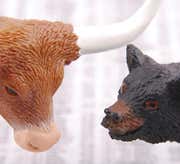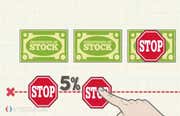Placing a trade order seems easy enough: Click the “buy” button to enter a trade, and hit “sell” when it’s time to get out. While it’s possible to execute trades this way, it’s not very efficient since it requires constant monitoring and can expose you to unnecessary financial risks.
If you trade using just the buy and sell buttons, for example, you may experience losses from slippage and from trading without a protective stop-loss order. Slippage refers to the difference between the price you expect and the price at which the trade is actually filled. In fast-moving markets, slippage can be substantial and make the difference between a winning and losing trade. Certain order types allow you to specify exact prices for trades, which minimizes the risks associated with slippage.
Protective stop-loss orders limit trading losses by creating a "line in the sand" past which you won’t risk any more money. These orders automatically close out losing trades at pre-determined price levels – and if you use an advanced order type, you can place a protective stop-loss order in the market as soon as you enter a trade. This can be especially beneficial in fast-moving markets where a stop-loss could be reached within seconds of an order getting filled.
Modern trading platforms support numerous order types that can help you trade with precision while limiting potential losses. Knowing when to trade is only part of trading – successful traders must also know how to trade and which order type is best for a given situation. In this guide, we’ll introduce the various order types – from basic to advanced – and show how each can be used by today's active traders.
Introduction To Order Types: Long And Short Trades
-
 Trading
TradingThe Stop-Loss Order - Make Sure You Use It
The stop-loss order is a simple but powerful investing tool. Find out how you can use it to help you implement your stock-investment strategy. -
 Investing
InvestingUnderstanding Market Orders And Limit Orders
A market order executes a transaction as quickly as possible at the present price. Immediacy is the main concern. A limit order is executed at or below a purchase or sale price. Price is the ... -
 Investing
InvestingStop Loss Order Strategy
A stop loss order is an order placed with a broker to sell a stock immediately if it drops to a certain price. It's a common way for investors to protect themselves from the possibility of a ...



